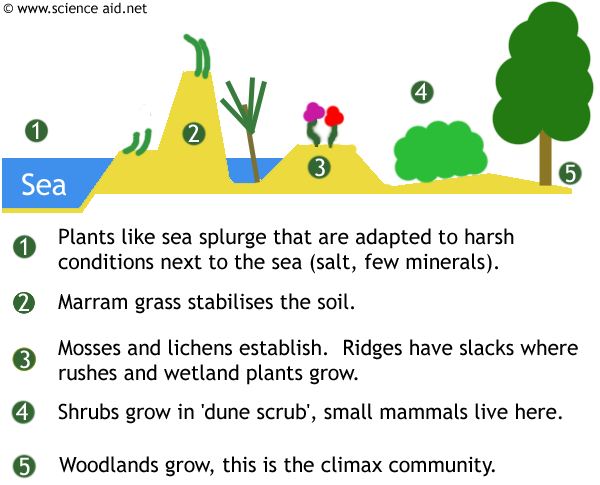Ecosystems
What is an Ecosystem?
A Population is a group of individuals from the same species, and populations from various species forms a community. The area that these communities lives is called the habitat and within this habitiat, the species occupy a niche where it takes on a specific role: eating certain foods, having certain predators. According to the competitive exclusion principle - no two species can occupy exactly the same niche.
Overall, an ecosystem is a community of fairly uniform habitat (rainforest, pond) that consitsts of interactions between organisms and their physical environment (abiotic factors).
Population Stability
The size of a population in an ecosystem tends to stay fairly constant, with no major fluctuations. However, there are certain fators that will affect the sizes of populations.
| Factor | Effect |
|---|---|
| Abiotic | Things like temperature, pH and mineral nutrients are vital for growth. If these were to change, it would make a certain niche less favourable. |
| Predation | The populations of predators and prey are very closely linked. Other factors (other than prey) may reduce the population of the predator, and this in turn influences the prey. |
| Competition | As previously discussed, species have a certain niche, whilst they cannot occupy exactly the same, they very often have overlapping niches which results in competition. Where two species occupy the same niche, only one or the other can survive. For example: the red and grey squirrel in Britain. The grey (Sciurus carolinensis) was introduced in the 19th centuary and has replaced the native red (Sciurus vulgaris). In some areas (near Norwich for example) they do coexist, but together their numbers are lower than if one or the other wholly populated the area, this is inter-specific competition. |
Succession
Many millions of years ago, the earth was devoid of any visible life, but later (before human intervention), it became covered in forest. This is called the climax community and is the most stable community possible in that particular area. The process of getting to the climax community is called succession.
There is generally a certain pattern to this process - where small plants initially grow for example, which changes the environment and makes it suitable for other species. Take the example of a sand dune.

Next to the shore are pioneer plants such as grasses, these make the dune more stable for more complex organisms. And this process continues and the dune is made more stable until the most stable community is reached: the climax.
Other example of where succession can occur are on recently formed volcanic islands or wetland formation. In each instance the climax community is again woodland.
Secondary succession happens in a habitat that has been previously colonized but has been distrubed; for example, an area of forest that has been cleared. Secondary sucession usually occurs more quickly than primary succession because there are existing factors (seeds, roots, soil fertility) that are more favourable as a result of the previous colonization.
